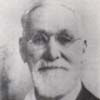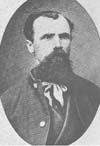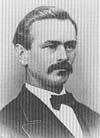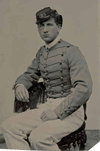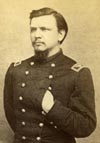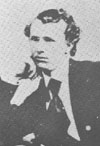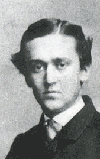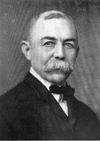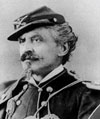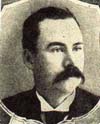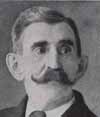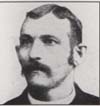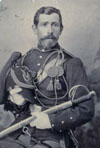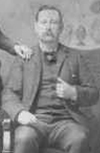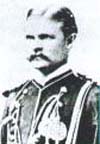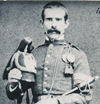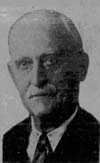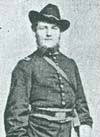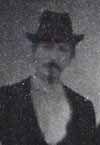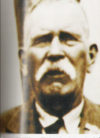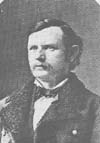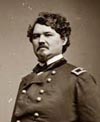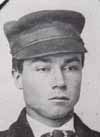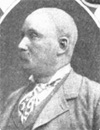Isaac Fowler (left) was born on September 15, 1844, in Darke County, Ohio. He was a Private with Company C who was with the pack train and in the hilltop fight during the Battle of the Little Bighorn.
Thomas O’Brien died of typhoid fever at Fort Buford, Dakota Territory, on September 15, 1876. He was initially buried in the Post Cemetery there and was later reinterred in the Custer National Cemetery, Crow Agency, Montana.
Henry Charles Weihe was born on September 16, 1847, in Saxony, Germany. He
was a Sergeant in Company M who participated in the valley fight and was
wounded during the hilltop fight.
Algernon Emory Smith (left)
was born on September 17, 1842, in Newport, New York. He was a First Lieutenant
in command of Company E who died with Custer’s Column.
The Treaty of Fort Laramie was
concluded on September 17, 1851. When it was before the Senate for
ratification, certain amendments were made which required the assent of the
Tribes, but the assent was not obtained. Congress appropriated money for the
fulfillment of the Treaty’s stipulations, but its validity was questioned.
James Montgomery Bell (right) died in Hermosa Beach, California, on September 17, 1919, and was buried in the San Francisco National Cemetery (The Presidio). He was a First Lieutenant of Company D who was on leave at the time of the battle.
James Lawler died on September 18, 1877, at Canyon Creek, Montana Territory. He was a Private in Company H who was not present at the battle due to detached service.
Ferdinand Widmayer died in Riverton, New Jersey, on September 18, 1913, and was buried in the Epworth United Methodist Cemetery in Palmyra, New Jersey. He was a Private in Company M who was not present at the battle due to detached service.
George W. Glenn, who was also known as George W. Glease, died on September 18, 1914, in Richmond, Virginia, and was buried in the Hampton National Cemetery in Hampton, Virginia. He was a Private in Company H who participated in the hilltop fight.
David McWilliams committed suicide on September 19, 1882, at Fort Meade, South Dakota, and was buried in the Fort Meade National Cemetery. He was a Private in Company H who was not present at the battle due to being shot in his leg while aboard the Far West.
George Anderson died of lip cancer in Minneapolis, Minnesota, on September 19, 1912, and was buried the next day in the Minneapolis Pioneers and Soldiers Memorial Cemetery, which is also known as Layman’s Cemetery. He was a Private in Company K who was not present at the battle due to detached service.
Alexander Browne Bishop died on September 19, 1935, in Brooklyn, New York, and was buried in The Evergreens Cemetery in Brooklyn, Kings County, New York. He was a Corporal in Company H who was wounded in the hilltop fight.
John A. Bailey was born in Jo
Daviess County, Illinois, on September 20, 1847. He was a Saddler with Company
B who was with the pack train and participated in the hilltop fight.
Jacob Horner (left) died of a respiratory infection on September 21, 1951, in Bismarck, North Dakota, and was buried in St. Mary’s Cemetery there. He was a Private in Company K who was not present at the battle due to detached service.
